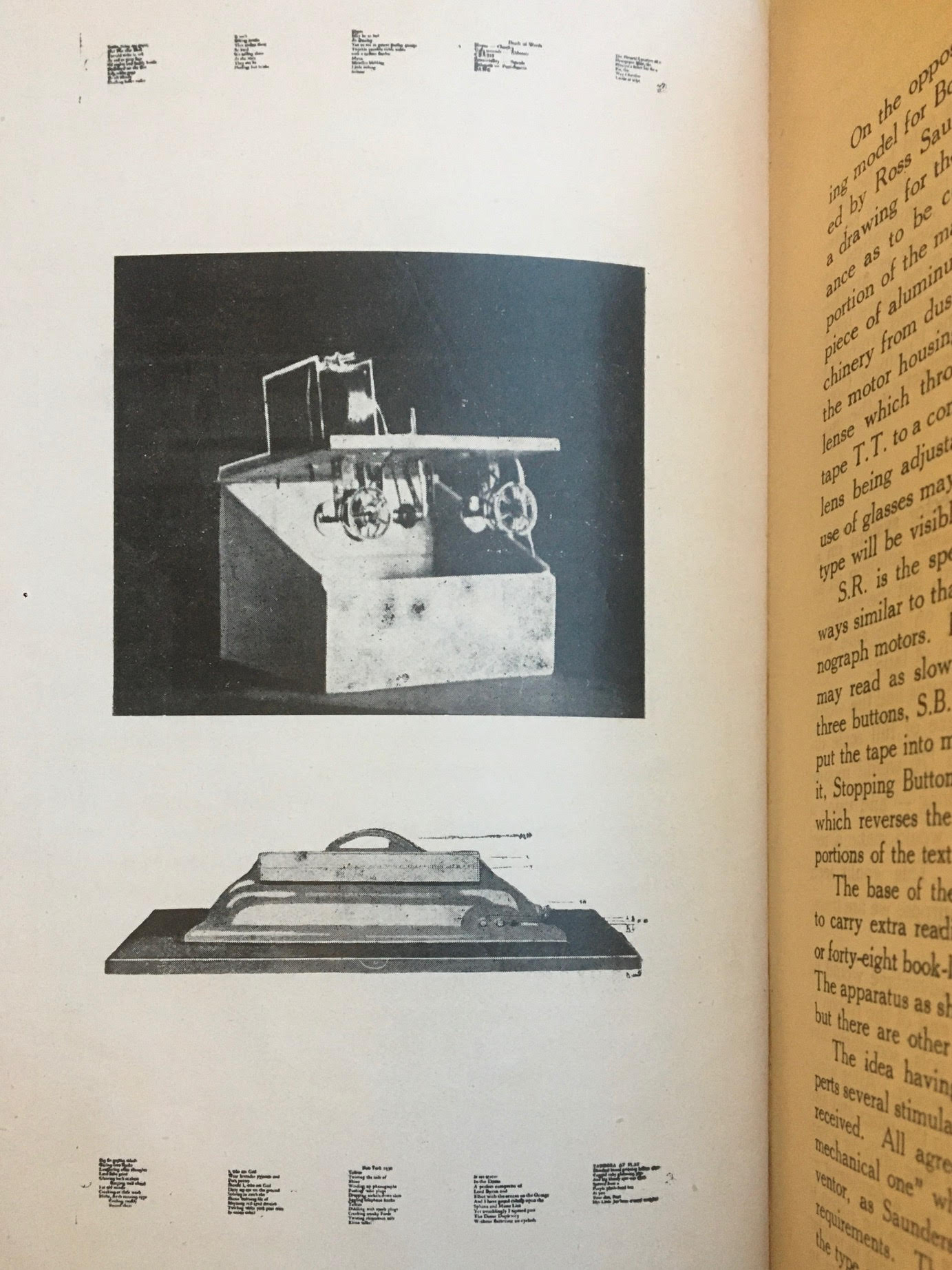
After there was no one left in the world, the painting machine, animated inside by a system of weightless springs, revolved . . . like a spinning top, . . . dashed itself against pillars, swayed and veered in infinitely varied directions, and followed its own whim in ejaculating onto the walls’ canvas the succession of primary colors . . . this modern deluge.
—Alfred Jarry, Docteur Faustroll
The autonomous creativity of Faustroll’s painting machine reverberates in some of the machine-based art since the Second World War. It has also been a factor in experimental literature. The expatriate writer Bob Brown (1886–1959) proposed that humans should learn to see words “machine-wise.” He invented a reading machine to transform words into optic images. A single line of microscopic text would pass under a lens and then be projected directly into a person’s mind by means of light—ideally, according to Brown, at great velocity. To suit the project, Brown devised a new genre of writing he called readies—a neologism combining the words read, ready, and talkies. Soliciting contributions from Gertrude Stein and William Carlos Williams, among others, Brown added arrows and dashes to encourage the mutual acceleration of machine and human perception.
Bob Brown (1886–1959), Readies for Bob Brown’s Machine (Cagnes-sur-Mer: Roving Eye Press, 1931). The Morgan Library & Museum, purchased on the Gordon N. Ray Fund, 2018. PML 197919.
